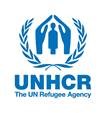Standardized Expanded Nutrition Survey 2019
Refugee Camps: Kakuma and Kalobeyei
Kenya, 2019
Get MicrodataIdentification
KEN_2019_SENS-Kakuma_v01_M
Standardized Expanded Nutrition Survey 2019
Refugee Camps: Kakuma and Kalobeyei
| Name | Country code |
|---|---|
| Kenya | KEN |
Other Household Survey [hh/oth]
Sample survey data [ssd]
Children 0-23 months
Children 6-59 months
Women 15-49 years
Households
Version
Version 2.1: Edited, anonymous dataset for licensed distribution.
2020-01
Scope
The SENS covered the following topics:
- Children 0-23 months: feeding practices
- Children 6-59 months: prevalence of acute malnutrition, underweight, stunting and anaemia, coverage of vit A supplementation, and prevalence of diarrhea
- Women 15-49 years: prevalence of anaemia
- Households: food security
| Topic |
|---|
| Health and Nutrition |
| Health |
| Water Sanitation Hygiene |
| Food security |
| Food Distribution |
Coverage
Kakuma Refugee Camp and Kalobeyei Refugee Settlement in Turkana County, Kenya
Children 0-59 months Women 15-49 years Refugee households
Producers and sponsors
| Name | Affiliation |
|---|---|
| UN Refugee Agency (UNHCR) | UN |
Sampling
A two-stage cluster survey with probability proportion to size sampling was employed in this survey. Standardized Monitoring and Assessment of Relief and Transitions (SMART) methodology to collect and analyse data on child anthropometry and UNHCR's Standardised Expanded Nutrition Survey (SENS) Guidelines for Refugee Populations was used to guide data collection for other indicators. The same households sampled by SMART were used in all indicators. Anaemia sample was drawn from the SMART sample size, as recommended by the UNHCR Standardised Expanded Nutrition Survey (SENS) Guidelines.
For each of the indicators used, households and individuals were sampled as follows:
Household-level indicators:
- WASH: every household
- Food Security: every other household
- Mosquito net: every other household
Individual-level indicators:
- Children 0-59 months: all eligible children in all households were assessed (based on the above calculations)
- Women 15-49: all eligible women in every other household were assessed.
The sample size for children, 6-59 months, was calculated using ENA for SMART software (9th, July 2015) according to UNHCR SENS guidelines (version 2 (2013). The calculation was based on the expected prevalence of global acute malnutrition (GAM) in children, 6-59 months. A precision of 3.5; a design effect (DEFF) of 1.5 for Kakuma and 1 for Kalobeyei; an average household size of 6.6 in Kakuma and 5.2 in Kalobeyei; and percentage of children under the age of five was estimated at 19.5% in Kakuma and 14.9% in Kalobeyei, using the UNHCR ProGres data, November 2019.
A two-stage cluster survey was conducted using the Standardized Monitoring and Assessment of Relief and Transitions (SMART) methodology to collect and analyse data on child anthropometry. Information on other indicators was collected and analysed using UNHCR's Standardised Expanded Nutrition Survey (SENS) Guidelines for Refugee Populations (Version 2 2013) (see www.sens.unhcr.org). ENA for SMART selects the clusters (blocks), once done a team was sent to a block to label the households numerically with indelible pens. Population density varies across the blocks at Kakuma. If a block contained 100 households or less, all households in the block were marked. If a Block contained more than 100 households then the team walked around the block to identify a path that divided the block into approximately two halves. One portion of the block was selected randomly. In the selected segment of the block the team proceeded to number all households from the first to the last. If there was more than one household in a particular compound, this was indicated at the entrance of the compound (e.g., 2019 SENS HH1). The numbering and labelling were done two days prior to commencement of the survey. If there was more than one household in a particular compound, this was indicated at the entrance of the compound (e.g., HH1-HH6). The numbering and labelling were done three days prior to commencement of the survey.
Survey instrument
-
Children 6-59 months (SENS Modules 1-2): Anthropometric status, oedema, enrolment in selective feeding programmes and blanket feeding programmes (CSB++), immunisation (measles), vitamin A supplementation in last six months, de-worming, morbidity from diarrhoea in past two weeks, haemoglobin assessment.
-
Children 0-23 months (SENS Module 3): Questions on infant and young children feeding practices.
-
Women 15-49 years (SENS Module 2): Pregnancy status, coverage of iron-folic acid pills and post-natal vitamin A supplementation, MUAC measurements for pregnant and lactating women (PLW), and haemoglobin assessment for non-pregnant women.
-
Food Security (SENS Module 4): Access and use of the general food ration (GFR), coping mechanisms when the GFR ran out ahead of time and household food dietary diversity using the food consumption score.
Data collection
| Start | End |
|---|---|
| 2019-11-19 | 2019-12-31 |
- Face-to-face [f2f]
| Name | Affiliation |
|---|---|
| UN Refugee Agency | UN |
Data Access
| Name | Affiliation | |
|---|---|---|
| UN Refugee Agency | UN | microdata@unhcr.org |
UNHCR (2021). Kenya: SENS in Kakuma and Kalobeyei Refugee Camps 2019. Accessed from https://microdata.unhcr.org
Contacts
| Name | Affiliation | |
|---|---|---|
| Curation Team | UNHCR | microdata@unhcr.org |
Metadata production
DDI_KEN_2019_SENS-Kakuma_v01_M
| Name | Affiliation | Role |
|---|---|---|
| UN Refugee Agency | UN | Documentation of the study |
| Development Economics Data Group | World Bank | Metadata adapted for Microdata Library |
2021-09
Metadata version
Version 01: This metadata was downloaded from the UNHCR Microdata Library catalog (https://microdata.unhcr.org/index.php). The following two metadata fields were edited - Document and Survey ID.
